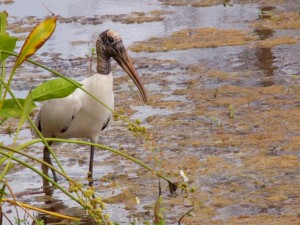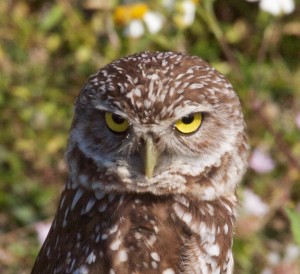
health of the Everglades’ wetlands.
Florida 1: Green Cay, Wakodahatchee
Florida 2: Corkscrew, Tigertail, Shark Valley
Recent galleries (birds, botany, & misc. critters)
We visited one of our favorite birding haunts, the Corkscrew Swamp Sanctuary, that comprises 13,000 acres in the heart of the Corkscrew Watershed in SW Florida. Only there were surprisingly few birds. The preserve was fabulous as always, with nearly 2 1/2 miles of canopied boardwalk meandering through a variety of feathery habitat, including the world’s largest old-growth forest of Bald Cypress. Only this time it was almost exclusively Yellow-rumped Warblers, a solitary great egret (displaying its breeding plumage), and the ubiquitous Cardinal that somehow always finds me. Oh, and a couple woodpeckers, the Red-belly and Downey. The former was tidying up a potential nest hole in a tall pine and the Downey was madly ripping into a branch for its morning snack, oblivious to me snapshooting nearby. Sooney saw a vireo and several other species, but compared to previous visits, the pickings were slim.
What’s particularly alarming is the dearth of wading birds compared to our last visit (see: Audubon’s Corkscrew Swamp Sanctuary.) I learned that it’s all about the water. During the rainy season, massive amounts of water flow through the swamp, providing an environment for fish and other aquatic animals to flourish. With the onset of the dry season, receding water levels trap fish in isolated pools that become ideal sources of bird food, especially breeding Wood Storks. Their method of eating is unlike the stalking and grabbing technique characterized by herons and egrets. Storks and hornbills dip their wide beaks into the shallows and rely on touch to identify and capture fish. These tactile feeders are masters at it and are prodigious eaters, devouring nearly 4 pounds daily during the 9-month breeding season. How well Storks reproduce is the premier indicator of wetlands health and the Audubon Society has been monitoring nesting pairs since 1958.
The Everglades originally was a “Sea of Grass” with water flowing naturally throughout nearly 2,500 square miles south of Lake Okeechobee. Agricultural demands led to the development of canals and roads restricting the natural flow of water into breeding grounds. Hence the conundrum. Water management experts are redesigning these manmade impediments to the original water flow and there are indications that the paramount indicator of swampy health is breeding more successfully. Bear in mind that we’re talking about over a million acres of swamp surrounded on three sides by water and where the average elevation is barely 6’. Rising sea levels will inevitably change the ecosystem due to the increased salinity of groundwater and the soils, and scientists are unsure how & when. Records have been kept since the 1840’s, and we’re grateful to be able to return to view the treasure that is one measure of these wetland’s health.

to view recent bird portraits.
The following day was, of course, gorgeous so we opted to observe shore birds. Our destination was Tigertail Beach Park on Marco Island, just south of Naples. Access to yet another section of the Florida Bird Trail was through a subdivision of houses that held a special surprise. On two opposing vacant lots were nests of two Burrowing Owls whose real estate was cordoned off. They commanded a protected panorama of their community—bicyclists and pedestrians with leashed dogs strolled by and waved to their cute feathery neighbors.
As soon as we crossed the bridge onto the white, sandy beach, we spotted an Osprey nest occupied by a couple chicks and attentive parents taking turns hunting. Having carefully checked the tide table, we waded over to Sand Dollar Island and spent a couple hours meandering among serious sunbathers, joggers, and a wide variety of shore birds. One sighting was particularly memorable, however. Sooney identified another “life” bird: this time a Piping Plover. Cute little critter not much larger than the shells and Fiddler crabs sharing the beach where it was scouring for food.
